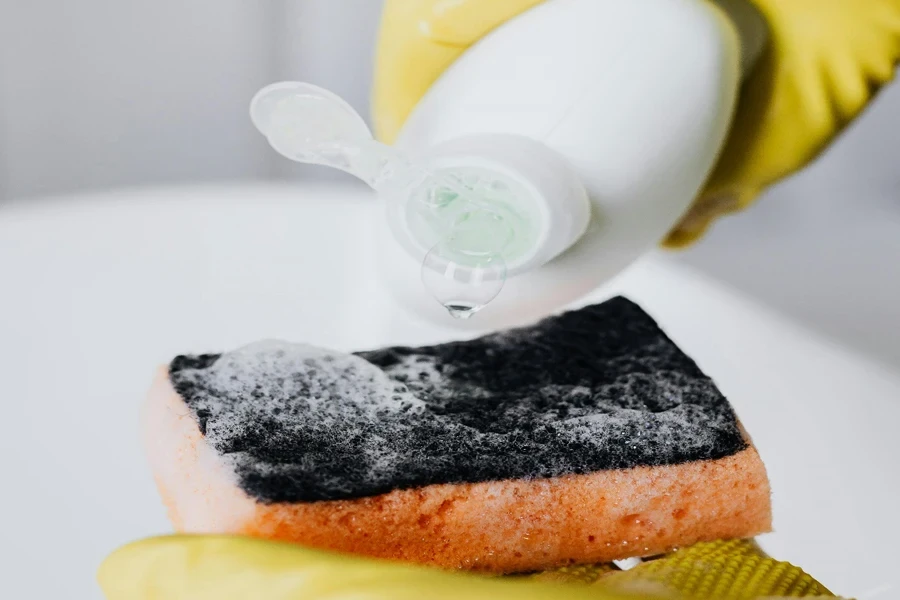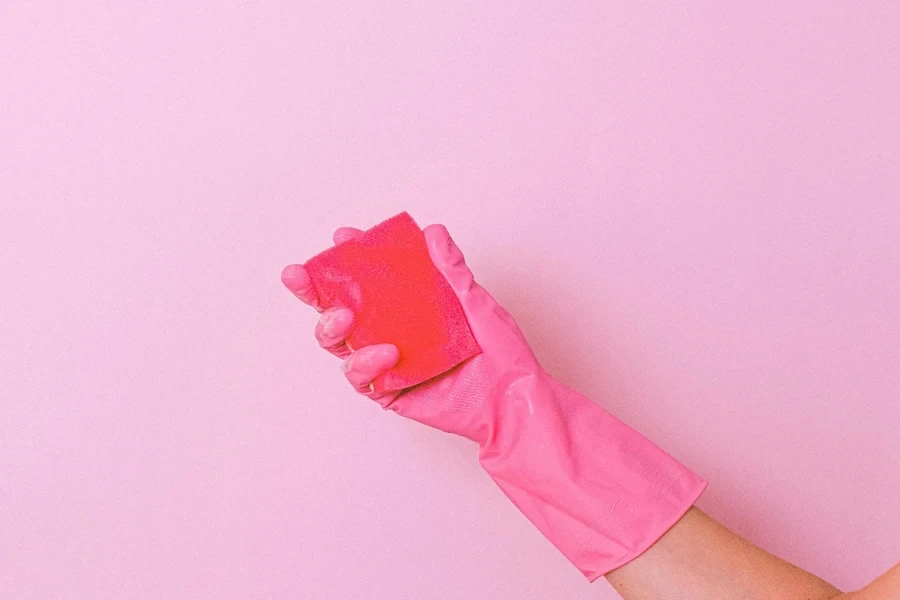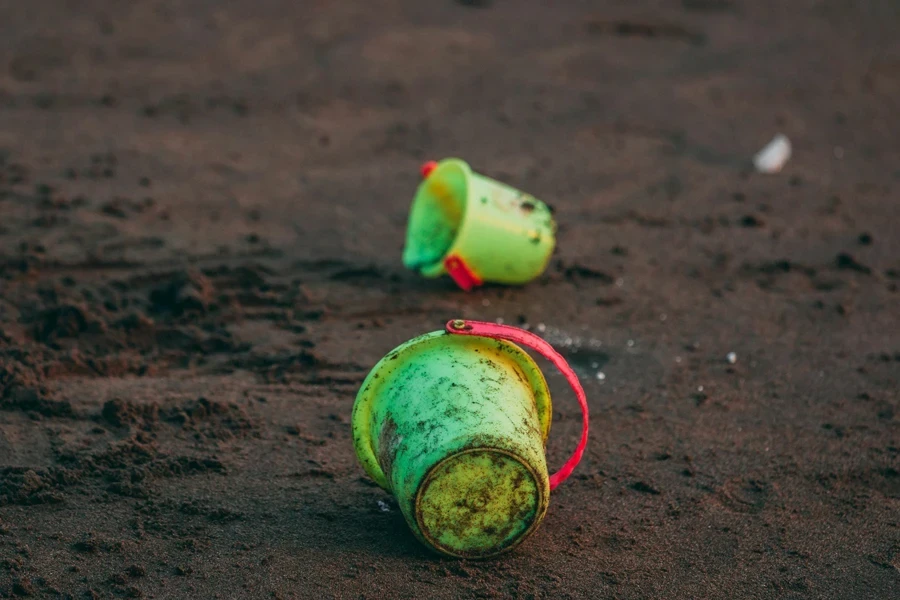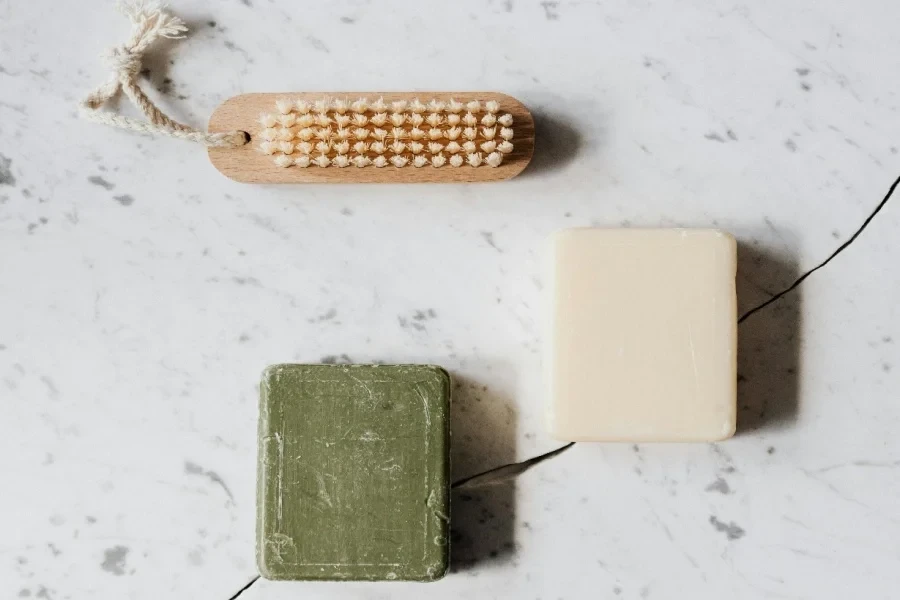Table of Contents
• Introduction
• Market overview
• Types of household cleaning tools
• Conclusion
Introduction

The household cleaning tools market is experiencing significant growth, fueled by technological advancements and an increased focus on sustainability. Market trends highlight a shift towards eco-friendly products and smart cleaning technologies. Essential tools such as scrub brushes, vacuum cleaners, and microfiber cloths are now designed for enhanced efficiency and convenience. This article provides an in-depth analysis of the market dynamics and examines the core cleaning tools necessary for maintaining a pristine home environment. Understanding these tools is crucial for businesses looking to meet the evolving demands of consumers in this sector.
Market overview

Market scale and growth
The household cleaning tools market is currently valued at USD 61.6 billion in 2023 and is projected to reach USD 163 billion by 2030, with a CAGR of 7.6% during the forecast period. This significant growth is attributed to the increasing consumer awareness of hygiene and cleanliness, coupled with advancements in cleaning technology and product innovations. Key market segments include a diverse range of products such as mops, brooms, brushes, vacuum cleaners, dusters, sponges, wipes, gloves, and buckets. Each category is designed to address specific cleaning needs, offering consumers a wide array of choices to maintain their homes effectively.
Current trends
Market trends indicate a strong emphasis on sustainable and eco-friendly cleaning products, driven by growing environmental concerns. Biodegradable formulations and products made from recycled materials are gaining popularity among consumers. Additionally, the rise of smart cleaning technology is transforming the market, with innovations like robotic vacuums and intelligent floor mops enhancing cleaning efficiency and convenience. There is also an increasing demand for personalized cleaning solutions, such as custom cleaning kits and subscription services, which cater to individual cleaning preferences and habits. These trends reflect the market’s focus on adapting to the evolving needs and preferences of consumers.
Types of household cleaning tools

Scrub brushes
Scrub brushes are essential for tackling tough stains and grime on various surfaces. They come in multiple variations, including those with strong nylon bristles for heavy-duty cleaning and softer polypropylene bristles for delicate surfaces. Material innovations such as ergonomic handles and thermoplastic rubber grips enhance user comfort and efficiency. Some scrub brushes feature interchangeable heads and antimicrobial coatings to prevent bacterial growth, maximizing both cleaning effectiveness and hygiene.
Toilet brushes
Toilet brushes are crucial for maintaining hygiene in the bathroom. Dedicated toilet brushes prevent cross-contamination, ensuring that bacteria from the toilet do not spread to other areas. Features like integrated cleaning solution compartments in the handle allow for an all-in-one cleaning experience. Brushes with silicone bristles provide superior scrubbing power and are easier to clean compared to traditional bristle designs. Stands with drip trays help in keeping the bathroom floor clean and dry.
Multi-purpose dusters
Multi-purpose dusters, especially those with extendable and pivoting designs, are ideal for cleaning high and hard-to-reach areas such as ceiling fans and shelves. These dusters often come with electrostatic fibers that attract and trap dust particles effectively. Extendable wands can reach up to 10 feet, while pivoting heads can adjust angles to access difficult spots. Replaceable microfiber heads enhance durability and can be machine washed for easy maintenance.
Sponges and scrubbers
Sponges and scrubbers are versatile tools used for different cleaning needs, from dishes to floors. Cellulose sponges are biodegradable and excellent for absorbing spills, while polyurethane foam sponges are durable and resistant to wear. Heavy-duty scrubbers made from stainless steel or copper are ideal for tough stains on pots and pans. Separate storage containers with ventilation help in drying and maintaining hygiene, preventing bacterial growth.
Spray bottles
Spray bottles are essential for the even distribution of cleaning solutions. They are used to apply cleaners to surfaces without over-saturating them, ensuring effective cleaning without waste. High-quality spray bottles feature adjustable nozzles for mist or stream settings and are made from durable materials like HDPE (high-density polyethylene) to resist chemical degradation. Proper labeling with permanent markers or printed labels is crucial to avoid confusion between different cleaning agents.
Microfiber cleaning cloths
Microfiber cleaning cloths are superior to regular cloths due to their ability to pick up and trap dust and dirt effectively. They are composed of fibers that are split to be 1/100th the diameter of a human hair, allowing for high absorbency and thorough cleaning. These cloths are gentle on surfaces, making them ideal for cleaning electronics, mirrors, and stainless steel without leaving streaks. Washing them without fabric softeners preserves their dust-trapping capabilities and extends their lifespan.
Brooms, dustpans, and mops
The combination of brooms, dustpans, and mops is fundamental for daily cleaning. Brooms with flagged bristles are effective in trapping fine dust particles, while dustpans with rubber edges ensure debris is swept up completely. Microfiber mops with detachable pads are highly efficient for cleaning hard floors, and steam mops can sanitize surfaces using high-temperature steam, eliminating the need for chemical cleaners. Adjustable handles on these tools provide ergonomic benefits, reducing strain during use.
Buckets

Buckets are multifunctional tools in household cleaning, used for holding water, cleaning solutions, and for rinsing sponges and mops. Heavy-duty plastic buckets with reinforced handles offer durability and ease of transport. Some buckets feature built-in wringers for mops, making it easier to wring out excess water without manual effort. Graduated measurements on the side of buckets help in mixing cleaning solutions accurately.
Cleaning solutions and gloves
Eco-friendly and multi-purpose cleaning solutions are becoming increasingly popular as consumers prioritize sustainability. These solutions often contain natural ingredients like citric acid and essential oils, which are effective yet gentle on surfaces. Gloves made from nitrile are resistant to punctures and chemicals, providing better protection compared to latex. Textured surfaces on gloves enhance grip, making it easier to handle cleaning tools and preventing accidents.
Conclusion

The household cleaning tools market is undergoing significant growth, driven by innovations that enhance efficiency and promote environmental sustainability. As the market continues to evolve, businesses must prioritize offering advanced, user-friendly, and eco-friendly cleaning solutions. Equipping homes with the right tools is crucial for maintaining cleanliness and health, reflecting the industry’s commitment to meeting consumer demands for high-quality and sustainable products.




